An Edwardian summer corset was on my sewing list for a long time! My Edwardian summer corset is a single-layer batiste corset with blue binding and external boning channels. Batiste was a popular fabric for Edwardian summer corsets.
‘Four-hook short batiste corset in pink, light blue or white […] made of fine quality batiste […] A splendid summer corset as well as for all seasons. A fine form fitting shape made in the best manner possible. Well boned and with girdles.’ (Sears & Roebuck Catalogue, 1900s)
My Edwardian batiste summer corset was a stash-buster project because I had suitable white cotton batiste fabric in my stash. Batiste is a tightly-woven, lightweight, opaque cotton fabric. It’s not a very strong fabric so I’m curious how well this corset holds its shape over time! My corset also has a button closure which was an alternative to the corset busk in the Edwardian era.
Why Summer Corset?
Summer corsets were worn in summer in the Edwardian era. They were supposed to be cooler to wear in summer than the typical double-layer coutil corsets: Let’s see if that’s true! Popular fabrics for summer corsets included leno-weave cotton net fabric, broche silk, linon broche – a linen-silk-blend fabric – cotton broderie anglaise fabric, linen cambric, sateen and cotton batiste. I chose white cotton batiste for my summer corset. But I also have another summer corset planned for which I’ll use cotton net fabric!
Here’s an antique 1905 batiste corset with Valenciennes lace trim, a 1910s single-layer batiste corset, another antique Edwardian batiste corset and a 1905 tropical cotton lawn corset with broderie anglaise.
Single-Layer Corset
Because Edwardian summer corset were usually made with just one fabric layer, I also made a single-layer corset. A single-layer corset is more difficult to sew, in my opinion, than a double-layer corset! I usually use the welt seam method for all my historical corsets because this method is easy and creates strong corsets. But the welt seam method is only for double-layer corsets, so I couldn’t use this method. Instead I used the lapped seam method. A lapped seam looks like a flat felled seam but it’s constructed differently. Moreover, it’s a historical correct construction method because lapped seams were the typical seam of historical summer corsets.
The Pattern
For my Edwardian batiste summer corset, I combined my Edwardian ribbon corset pattern with my Edwardian straight-front corset pattern into one pattern: So it’s basically like my ribbon corset but lengthened at the top turning the underbust corset into a bust corset.
Related: Edwardian Ribbon Corset
Skeleton Corset
The Edwardian batiste summer corset works basically like a skeleton summer corset because batiste fabric is not strong enough as corset fabric. The synthetic whalebone boning, waist tape and straight-grain binding provide the structure and hold the corset together. The batiste fabric is just preventing the flesh bulging out between the boning as is the case with skeleton corsets! Here at the V&A museum is an antique 1895 skeleton ribbon summer corset and at the MET is another skeleton waist chincher.
Button Closure
Most historical corsets had a corset busk as closure but there were also other types of closures. Lightly boned corsets, that were usually advertised as health corsets, typically had a button closure. This is my second corset with a button closure.
But unlike my health corset, this corset has just ordinary stitched buttonholes instead of folded fabric buttonholes! Let’s see how durable they are or how quickly they stretch out of shape! The following two Edwardian corsets with stitched buttonholes at the MET museum were my inspiration: 1894 beautiful silk & lace buttoned corset and 1900s buttoned maternity corset.
The buttons, however, are attached with tape, like on my health corset. This 1899 Reliance health corset has stitched buttonholes and the buttons attached with tape.
Blue Boning Channels
I used blue cotton twill tape for the external boning channels and the binding at the top and bottom of the corset. My inspiration to use blue twill tape as boning channels and binding came from the following antique Edwardian corsets: 1900s corset with blue boning channels and fagoting stitches, 1910s blue & white striped summer corset, 1900-5 white corset with pink external boning channels at the MET and 1900s tan coutil corset with white external boning channels.
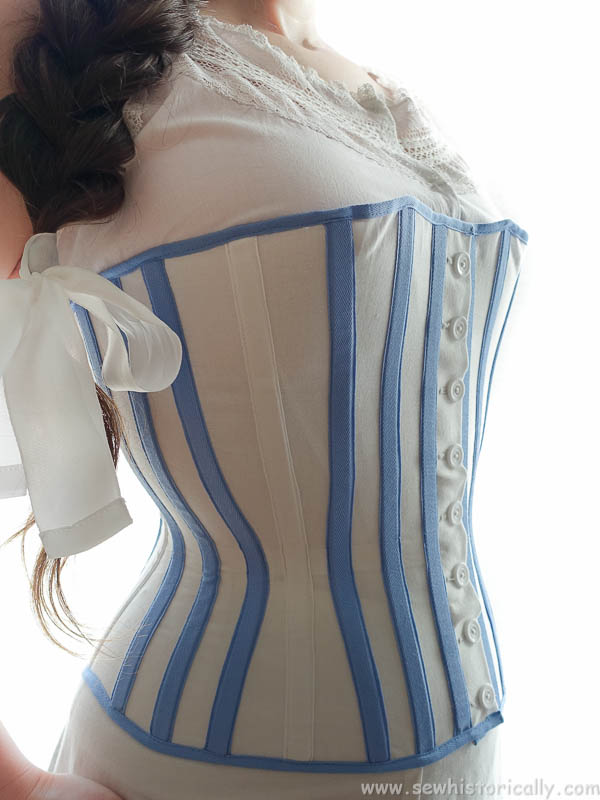
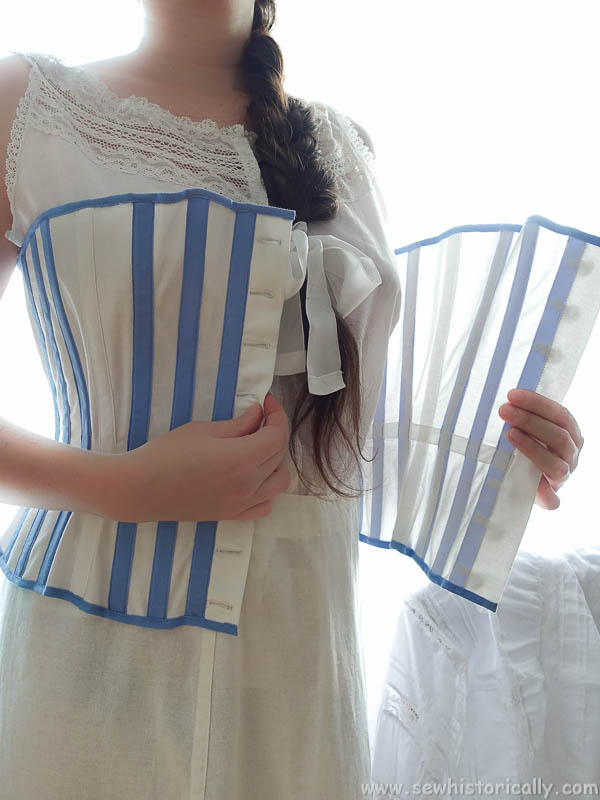
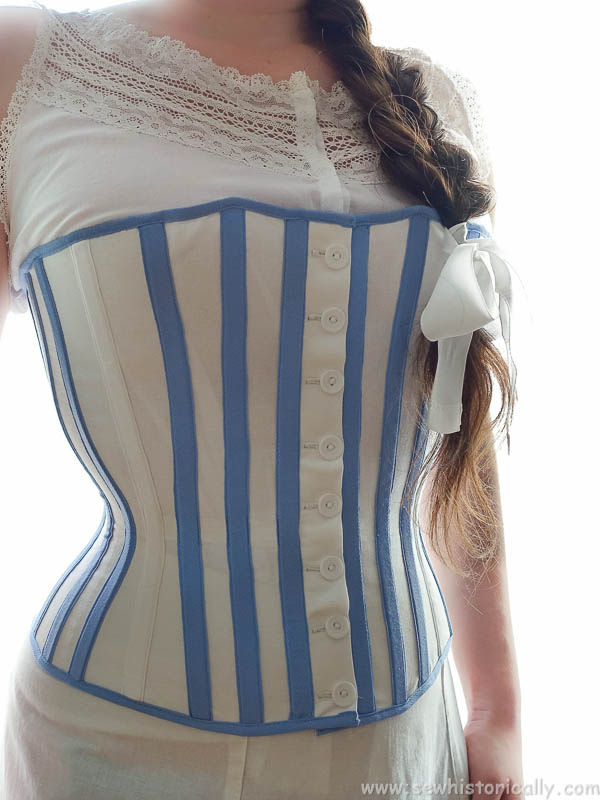
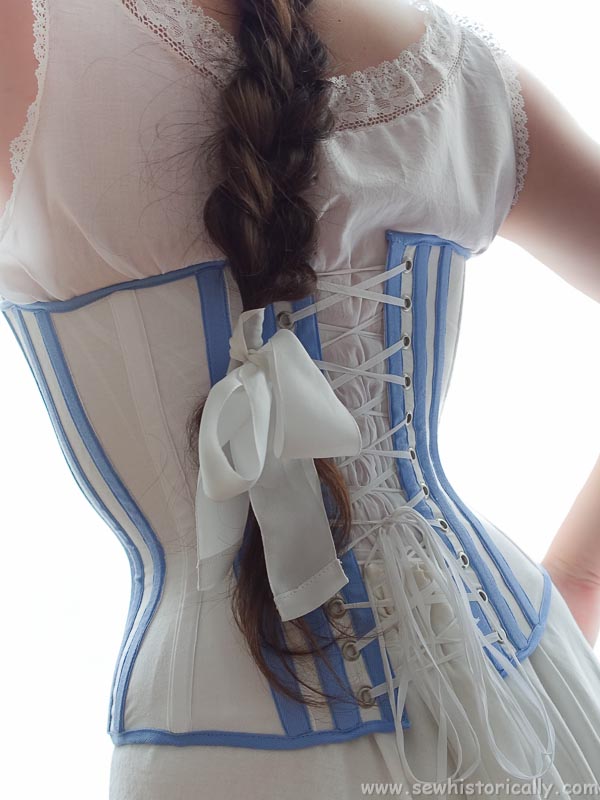
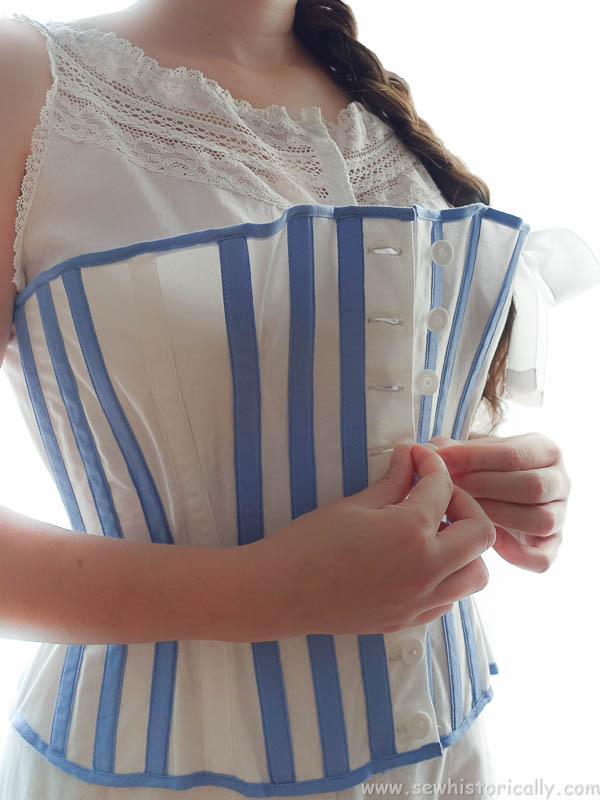
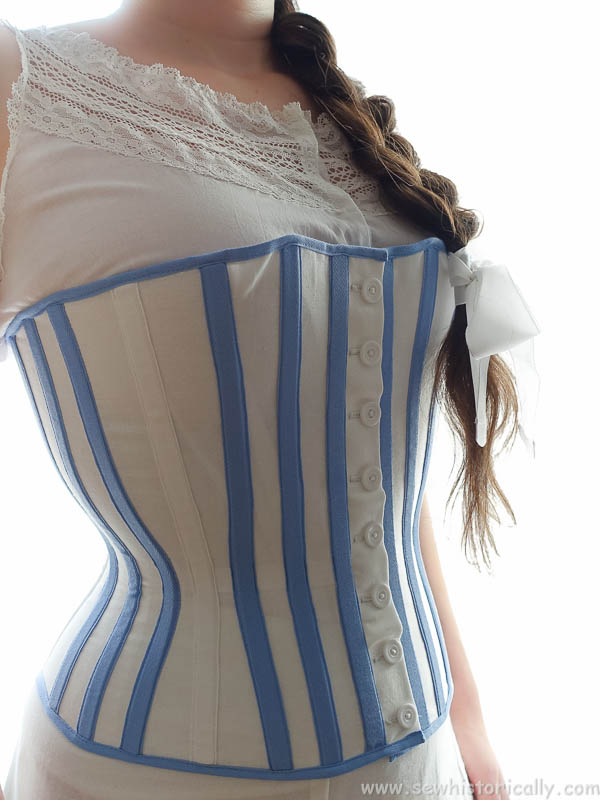
This is beautiful. I recently just wore my first corset and now want to make my own. This is a very motivating post. You do such beautiful work.
Thank you so much! 😀
Do you have any updates on the durability of this corset? How are the seams holding up? I am very curious to know, as I would like to make myself an Edwardian summer corset for everyday wear.
It’s very durable and the seams are holding up fine. 🙂